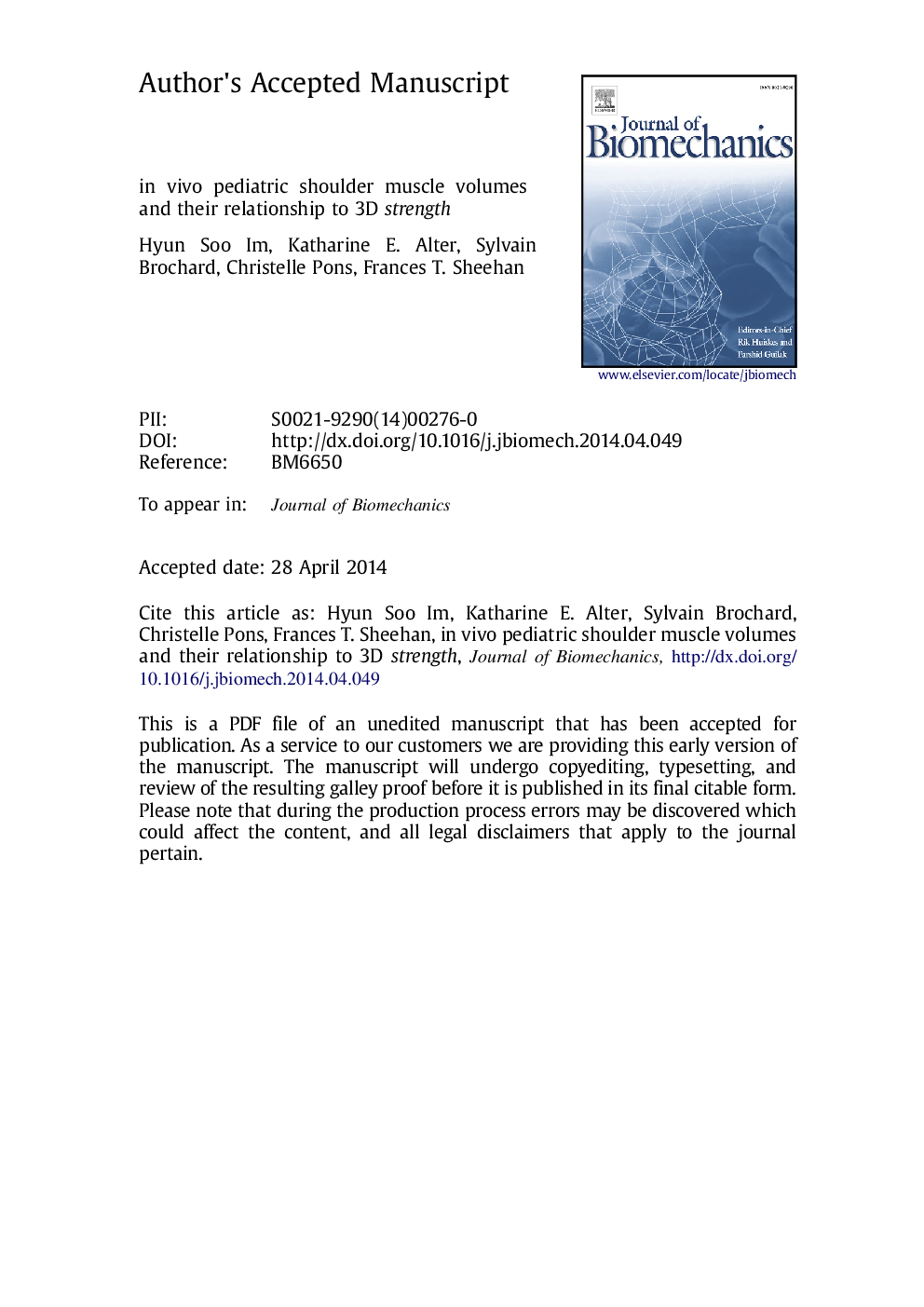| کد مقاله | کد نشریه | سال انتشار | مقاله انگلیسی | نسخه تمام متن |
|---|---|---|---|---|
| 10431858 | 910228 | 2014 | 30 صفحه PDF | دانلود رایگان |
عنوان انگلیسی مقاله ISI
In vivo pediatric shoulder muscle volumes and their relationship to 3D strength
دانلود مقاله + سفارش ترجمه
دانلود مقاله ISI انگلیسی
رایگان برای ایرانیان
کلمات کلیدی
موضوعات مرتبط
مهندسی و علوم پایه
سایر رشته های مهندسی
مهندسی پزشکی
پیش نمایش صفحه اول مقاله

چکیده انگلیسی
In the pediatric shoulder, injury and pathology can disrupt the muscle force balance, resulting in severe functional losses. As little data exists pertaining to in vivo pediatric shoulder muscle function, musculoskeletal data are crucially needed to advance the treatment of pediatric shoulder pathology/injury. Therefore, the purpose of this study was to develop a pediatric database of in vivo volumes for the major shoulder muscles and correlate these volumes with maximum isometric flexion/extension, internal/external rotation, and abduction/adduction joint moments. A methodology was developed to derive 3D shoulder muscle volumes and to divide the deltoid into sub-units with unique torque producing capabilities, based on segmentation of three-dimensional magnetic resonance images. Eleven typically developing children/adolescents (4F/7M, 12.0±3.2 years, 150.8±16.7 cm, 49.2±16.4 kg) participated. Correlation and regression analyses were used to evaluate the relationship between volume and maximum, voluntary, isometric joint torques. The deltoid demonstrated the largest (30.4±1.2%) and the supraspinatus the smallest (4.8±0.5%) percent of the total summed volume of all six muscles evaluated. The anterior and posterior deltoid sections were 43.4±3.9% and 56.6±3.9% of the total deltoid volume. The percent volumes were highly consistent across subjects. Individual muscle volumes demonstrated moderate-high correlations with torque values (0.70-0.94, p<0.001). This study presents a comprehensive database documenting normative pediatric shoulder muscle volume. Using these data a clear relationship between shoulder volume and the torques they produce was established in all three rotational degrees-of-freedom. This study furthers the understanding of shoulder muscle function and serves as a foundation for evaluating shoulder injury/pathology in the pediatric/adolescent population.
ناشر
Database: Elsevier - ScienceDirect (ساینس دایرکت)
Journal: Journal of Biomechanics - Volume 47, Issue 11, 22 August 2014, Pages 2730-2737
Journal: Journal of Biomechanics - Volume 47, Issue 11, 22 August 2014, Pages 2730-2737
نویسندگان
Hyun Soo Im, Katharine E. Alter, Sylvain Brochard, Christelle Pons, Frances T. Sheehan,